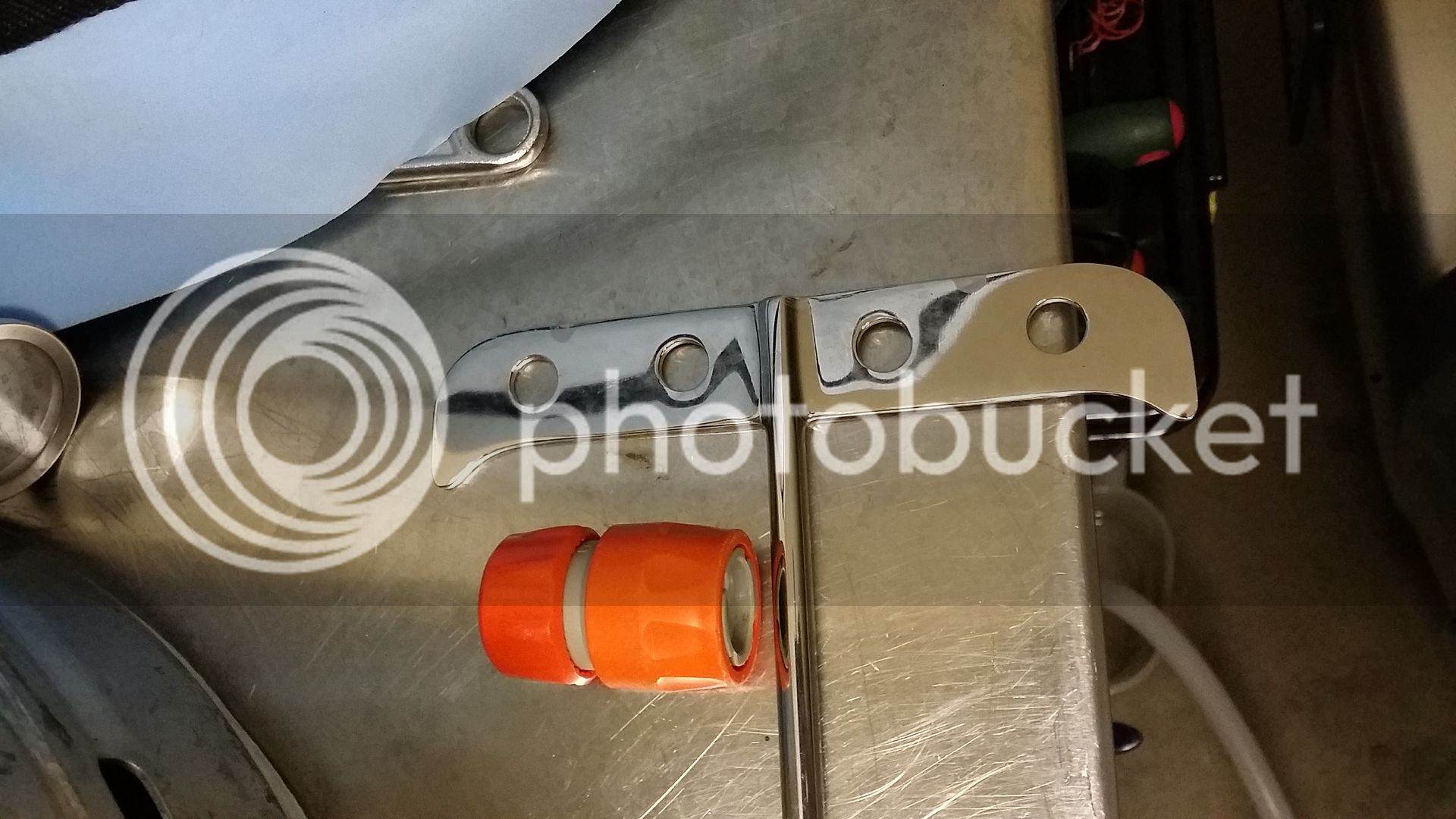scooterism
Well-Known Member
- Joined
- 24/10/15
- Messages
- 556
- Reaction score
- 87
Hi, just after a recipe check please;
Lager II
German Pilsner (Pils) (2 A)
Type: All Grain
Batch Size: 23.00 l
Boil Size: 27.80 l
Boil Time: 90 min
End of Boil Vol: 24.96 l
Final Bottling Vol: 22.00 l
Fermentation: Lager, Single Stage
Date: 30 Jul 2016
Brewer:
Asst Brewer:
Equipment: My equipement.
Efficiency: 72.00 %
Est Mash Efficiency: 75.1 %
Taste Rating: 30.0
Taste Notes:
Ingredients
Amt
Name
Type
#
%/IBU
23.02 l
Gold Coast Water
Water
1
-
4.50 kg
Pilsner (2 Row) Ger (3.9 EBC)
Grain
2
86.9 %
0.50 kg
Wheat Malt, Ger (3.9 EBC)
Grain
3
9.7 %
0.13 kg
Acid Malt (5.9 EBC)
Grain
4
2.4 %
0.05 kg
Melanoiden Malt (39.4 EBC)
Grain
5
1.0 %
30.00 g
Northern Brewer [8.50 %] - Boil 60.0 min
Hop
6
28.5 IBUs
18.48 g
Hallertauer Mittelfrueh [4.00 %] - Boil 20.0 min
Hop
7
5.0 IBUs
0.30 tsp
Irish Moss (Boil 10.0 mins)
Fining
8
-
18.48 g
Hallertauer Mittelfrueh [4.00 %] - Boil 10.0 min
Hop
9
3.0 IBUs
Gravity, Alcohol Content and Color
Est Original Gravity: 1.050 SG
Est Final Gravity: 1.010 SG
Estimated Alcohol by Vol: 5.3 %
Bitterness: 36.5 IBUs
Est Color: 7.6 EBC
Measured Original Gravity: 1.046 SG
Measured Final Gravity: 1.010 SG
Actual Alcohol by Vol: 4.7 %
Calories: 427.1 kcal/l
Mash Profile
Mash Name: Single Infusion, Light Body, Batch Sparge
Sparge Water: 19.48 l
Sparge Temperature: 75.6 C
Adjust Temp for Equipment: FALSE
Total Grain Weight: 5.18 kg
Grain Temperature: 22.2 C
Tun Temperature: 22.2 C
Mash PH: 5.20
Mash Steps
Name
Description
Step Temperature
Step Time
Mash In
Add 13.56 l of water at 70.6 C
64.4 C
75 min
Sparge: Batch sparge with 2 steps (5.55l, 13.92l) of 75.6 C water
Mash Notes: Simple single infusion mash for use with most modern well modified grains (about 95% of the time).
Carbonation and Storage
Carbonation Type: Keg
Pressure/Weight: 86.48 KPA
Keg/Bottling Temperature: 7.2 C
Fermentation: Lager, Single Stage
Volumes of CO2: 2.3
Carbonation Used: Keg with 86.48 KPA
Age for: 30.00 days
Storage Temperature: 15.6 C
Notes
Lager II
German Pilsner (Pils) (2 A)
Type: All Grain
Batch Size: 23.00 l
Boil Size: 27.80 l
Boil Time: 90 min
End of Boil Vol: 24.96 l
Final Bottling Vol: 22.00 l
Fermentation: Lager, Single Stage
Date: 30 Jul 2016
Brewer:
Asst Brewer:
Equipment: My equipement.
Efficiency: 72.00 %
Est Mash Efficiency: 75.1 %
Taste Rating: 30.0
Taste Notes:
Ingredients
Amt
Name
Type
#
%/IBU
23.02 l
Gold Coast Water
Water
1
-
4.50 kg
Pilsner (2 Row) Ger (3.9 EBC)
Grain
2
86.9 %
0.50 kg
Wheat Malt, Ger (3.9 EBC)
Grain
3
9.7 %
0.13 kg
Acid Malt (5.9 EBC)
Grain
4
2.4 %
0.05 kg
Melanoiden Malt (39.4 EBC)
Grain
5
1.0 %
30.00 g
Northern Brewer [8.50 %] - Boil 60.0 min
Hop
6
28.5 IBUs
18.48 g
Hallertauer Mittelfrueh [4.00 %] - Boil 20.0 min
Hop
7
5.0 IBUs
0.30 tsp
Irish Moss (Boil 10.0 mins)
Fining
8
-
18.48 g
Hallertauer Mittelfrueh [4.00 %] - Boil 10.0 min
Hop
9
3.0 IBUs
Gravity, Alcohol Content and Color
Est Original Gravity: 1.050 SG
Est Final Gravity: 1.010 SG
Estimated Alcohol by Vol: 5.3 %
Bitterness: 36.5 IBUs
Est Color: 7.6 EBC
Measured Original Gravity: 1.046 SG
Measured Final Gravity: 1.010 SG
Actual Alcohol by Vol: 4.7 %
Calories: 427.1 kcal/l
Mash Profile
Mash Name: Single Infusion, Light Body, Batch Sparge
Sparge Water: 19.48 l
Sparge Temperature: 75.6 C
Adjust Temp for Equipment: FALSE
Total Grain Weight: 5.18 kg
Grain Temperature: 22.2 C
Tun Temperature: 22.2 C
Mash PH: 5.20
Mash Steps
Name
Description
Step Temperature
Step Time
Mash In
Add 13.56 l of water at 70.6 C
64.4 C
75 min
Sparge: Batch sparge with 2 steps (5.55l, 13.92l) of 75.6 C water
Mash Notes: Simple single infusion mash for use with most modern well modified grains (about 95% of the time).
Carbonation and Storage
Carbonation Type: Keg
Pressure/Weight: 86.48 KPA
Keg/Bottling Temperature: 7.2 C
Fermentation: Lager, Single Stage
Volumes of CO2: 2.3
Carbonation Used: Keg with 86.48 KPA
Age for: 30.00 days
Storage Temperature: 15.6 C
Notes
Created with BeerSmith





